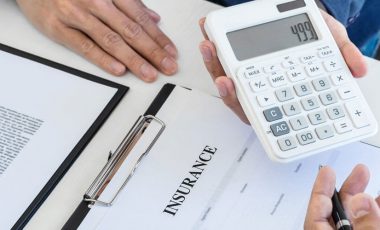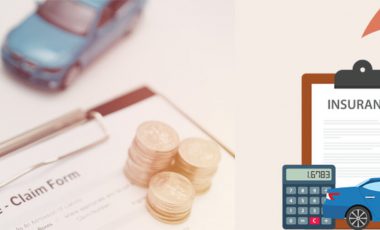Pennsylvania Car Insurance Laws: Everything You Need to Know
Understanding your options for Pennsylvania auto insurance is essential whether you’ve just moved here or have lived there your entire life. Read the article below to learn about Pennsylvania car insurance laws. Your car must have the bare minimum of coverage while it is on the road if you are a Pennsylvania driver.
The Pennsylvania Department of Transportation (PennDOT) stipulates paperwork that must be completed in order to register a vehicle in Pennsylvania. Don’t wait until the last minute since some of these are only accessible at PennDOT facilities or through the tag and title specialists.
If you’re relocating to Pennsylvania, bear in mind that you must apply for a Pennsylvania license within a certain number of days of establishing residency, along with a Pennsylvania title and registration for your vehicle(s).
What are the minimum requirements for auto insurance in Pennsylvania?
In almost every state, you must have a certain level of insurance in order to lawfully operate a vehicle. The limit is the least quantity of insurance that you may own while still being able to operate a vehicle legally in your state. These restrictions can be raised for a comparatively little premium increase.
Every motorist in Pennsylvania is required to have a minimum of the aforementioned levels of Pennsylvania liability insurance. This is frequently written as 15/30/5. Given that it states the limitations of three different quantities, this is referred to as a split limit. Per person, per accident, and property damage is the three different forms of coverage.
Below are the legal auto insurance in Pennsylvania requirements:
| Coverage Types | Amount |
|---|---|
| Bodily Injury Per Person | $15,000 |
| Bodily Injury Per Accident | $30,000 |
| Property Damage | $5,000 |
No-fault insurance in Pennsylvania
One of the about a dozen states that utilize a “no-fault” system for auto insurance is Pennsylvania. In a no-fault system, regardless of who was at fault in a car accident, your own auto insurance coverage (specifically, your “personal injury protection” or “medical benefits” coverage) will cover any out-of-pocket expenses for medical care incurred by anyone covered by the policy, up to the policy’s coverage limits.
Your injuries must exceed a defined threshold in accordance with state law before you may pursue a third-party insurance claim or a lawsuit against the person who caused the accident.
When vehicle owner buy car insurance, they can basically “opt-out” of the no-fault system in Pennsylvania, which is fairly unusual among no-fault states. Insurance companies are required under Pennsylvania Statutes Title 75 section 1705 to provide clients with information about their coverage options, including the ability to opt-in or out. Let’s examine these two possibilities in more detail.
What is considered as Pennsylvania proof of insurance?
- The copy of the insurance identity (ID) card issued by the self-insured or an insurance company.
- Duplicate of the insurance policy’s declaration page. This one is often acquired together with the insurance ID card when an insurance policy is established or renewed. Usually, drivers and vehicles covered by the insurance are listed on the declaration page;
- Copy of a valid insurance binder that is signed by an authorized insurance agent or broker and includes all the data that must be on the ID card, omitting the policy number. Binders, which act as temporary proof of insurance documents, are given out when a new policy is created. It is good for either 30 or 60 days.
- If a consumer submits a binder, they will have to resubmit their insurance documentation when the binder runs out. They will be obliged to serve the suspension if they are unable to present proof in any acceptable form of insurance;
- Copy of an insurance application for the Pennsylvania Assigned Risk Plan that is signed by a licensed producer and includes all the information that must be on the ID card, minus the policy number (insurance agent).
- The letter from the insurance company, on the firm’s letterhead and signed by an underwriter, attesting to the insured’s financial responsibility.
Car insurance laws in Pennsylvania for young drivers
Young drivers can’t wait to get on the road and enjoy that type of liberty for the first time. It’s critical to familiarize yourself with Pennsylvania’s new driver rules in order to protect everyone’s safety on the road.
Once they reach 16, new drivers can apply for their learner’s license. After completing six months of driving, 65 hours of supervised driving, 10 hours at night, and 5 hours in bad weather, they may then apply for their limited driver’s license.
All limitations are removed after a driver becomes 17 years, and 6 months old, provided they have held their junior license for 12 months, haven’t had an accident, and haven’t been convicted of anything.
What may push up the cost of my auto insurance?
Be careful to bear in mind the elements that might raise your premium once you’ve found the ideal coverage.
Traffic offenses:
Minor and significant traffic offenses including speeding tickets, irresponsible driving, and DUIs are all examples of traffic offenses.
Accidents with fault:
Large insurance claims resulting from at-fault incidents may have an impact on your premium.
Adding a driver to your insurance plan:
You should include them in your insurance if someone else drives your automobile. Their driving history and record might raise your insurance premium.
Insurance lapse:
When you have a registered automobile but no auto insurance, you have a lapse in coverage. In many areas, driving without auto insurance might render you a high-risk driver when obtaining auto insurance.
Pennsylvania Penalties for driving without Proof of Insurance
Driving without insurance is prohibited in most states and carries a range of penalties. The penalty for driving without insurance may include the following and surpass the monthly insurance payment.
- Fine : If you cause an accident, your state’s fine might total thousands of dollars.
- Suspension of license: In some places, if you are found driving without insurance, your license may be suspended or revoked.
- Vehicle being seized: Your automobile may be towed in some areas, and you wouldn’t be able to get it back unless you provided evidence of insurance. You’ll have to pay additional impound and reinstatement fees to get your car returned.
- Vehicle and medical expenses: If you are in an accident and don’t have insurance, you’ll have to pay for your own damages, which may be quite expensive depending on how bad the accident was. You can potentially face legal action for personal harm or property damage.
- An increase in the cost of automobile insurance: You become a high-risk driver if you drive without insurance, which can raise your rate. To demonstrate that you can obtain the necessary insurance, several states need SR-22 paperwork. Your driving history will suffer if you have an SR-22.
Optional Pennsylvania car insurance coverages
Limited or Full Tort:
You can choose between having full or limited tort insurance. You can save money on your rates by purchasing limited tort insurance.
All out-of-pocket medical and other costs can still be recovered, but you cannot recover any damages, such as compensation for pain and suffering unless the injuries fall under one of Act 6 of 1990, chapter 75, section 1705’s exceptions to limited tort. You maintain unfettered rights to file a lawsuit against the negligent party if you choose full tort coverage.
Uninsured Motorist (UM):
If you are struck by an at-fault uninsured driver, this coverage covers physical injuries to you, your family, and your passengers. Property damage is not covered by this at all.
Underinsured Motorist (UIM):
If you are hit by a negligent driver who does not have enough insurance to satisfy your claim, you, your family, and your passengers are covered under the underinsured motorist (UIM) policy for bodily harm.
Property damage is not covered by this at all.
Stacking of UM or UIM:
This insurance option enables you to get UM or UIM coverage from many policies under which you are insured, or to double the amount of UM or UIM coverage by the number of cars listed on your policy. The cost of adding underinsured or uninsured driver coverage is higher.
Funeral Benefit:
If you or a member of your family passes away as a consequence of a car accident, this policy will pay, up to a set financial level, for funeral costs.
Income Loss: If a vehicle accident leaves you unable to work due to injuries, this coverage will compensate a percentage of your lost salary.
Comprehensive:
This often covers theft or damage to your automobile caused by dangers like fire, water, vandalism, or running over an animal. To get a car loan, most banks or lenders need you to get this insurance.
Extraordinary Medical Benefits:
This insurance covers costs for treatment and rehabilitation that are greater than $100,000. It offers coverage up to $1 million at most.
Accidental Death benefits:
If a motor vehicle accident-related bodily injury causes death within 24 months of the accident date, this benefit is given to the insured’s personal representative.
Rental Reimbursement Coverage:
If a person has a covered comprehensive or collision loss, this coverage will cover their costs to rent a car up to the policy’s maximum.
Towing Coverage:
Towing Coverage pays a person’s labor and towing expenses for a covered disabled vehicle, up to the policy’s maximum.
Normally, only vehicles with comprehensive and collision coverage are eligible for this coverage.
Gap Coverage:
Gap coverage will cover the shortfall between an insurance company’s total loss settlement and the remaining loan balance on a car.
Traditionally, a person may only get this coverage when they buy a new car.
Want To Know More (FAQs)?
-
Does Pennsylvania Require Car Insurance for Registration?
If you want to register your automobile in Pennsylvania, you must provide evidence of insurance. Additionally, your insurance must satisfy the minimum standards set by the state.
-
In Pennsylvania, does insurance follow the vehicle or the driver?
In Pennsylvania, your auto insurance will accompany the vehicle. They are protected if a friend or family member crashes your car while operating it.
-
In Pennsylvania, is it Possible to Buy Car Insurance Without a License?
In Pennsylvania, you may purchase vehicle insurance without a license. Owners of model cars and those who own an automobile for a family member to drive are both covered by this situation.
-
Does Pennsylvania Permit Compensation for Reduced Value Following an Accident?
Yes. Drivers in Pennsylvania are entitled to request reimbursement for lost value following an accident. The term “diminished value” describes the variation in your car’s worth between before and after an accident.
-
How do auto insurance requirements in Pennsylvania change after a DUI?
Although a DUI conviction in Pennsylvania carries severe fines and punishments, drivers are not required to submit an SR-22 insurance application in order to have their licenses back.
-
What does it mean that Pennsylvania is a no-fault state, and is it?
Yes. No-fault car insurance laws Pennsylvania are applicable. Because Pennsylvania is a “no-fault state,” all drivers and passengers must have at least $5,000 in personal injury protection policy, which covers medical expenses even if the driver or passengers are at fault in an accident.
-
Does Pennsylvania Require PIP Coverage?
Yes. Every motorist in Pennsylvania must have personal injury protection coverage of at least $5,000.

We generated 12,100,000+ Quotes (...counting), Helping People to Save Money and Time.
Sources:
- Referred to the website of the Pennsylvania Department of Transportation to understand the Pennsylvania auto insurance requirements on 8th October 2022.
- Checked Pennsylvania state general assembly website for the tort options on 8th October 2022.
Editorial Guidelines: The above is meant as general information to help you understand the different aspects of auto insurance. This information does not refer to any specific auto insurance policy. Coverages and other features vary between insurers, vary by state, and are not available in all states. References to costs of coverages/repair, average or typical premiums, amounts of losses, deductibles, etc., are indicative and may not apply to your situation. We encourage you to speak to our insurance representative and to read your policy contract to fully understand your coverages.
Featured Posts

Cheapest Car Insurance After a DUI: Discover Wallet-Friendly Options

Cheap Liability-Only Car Insurance for 2024: Complete Guide

